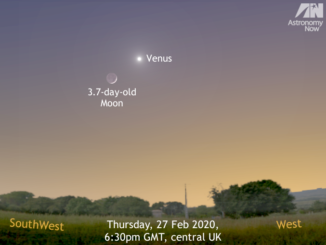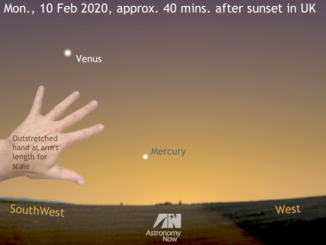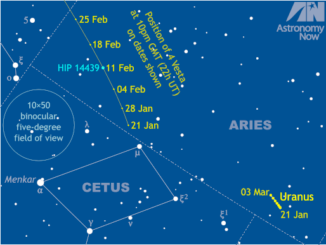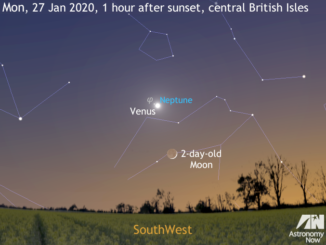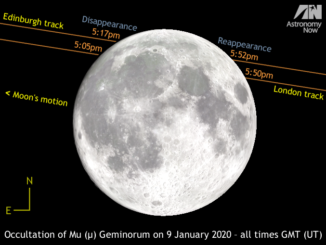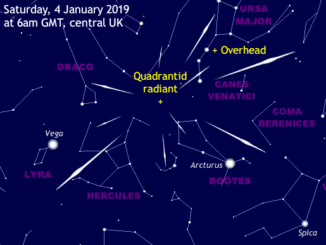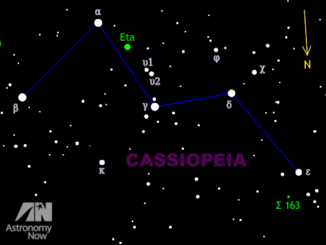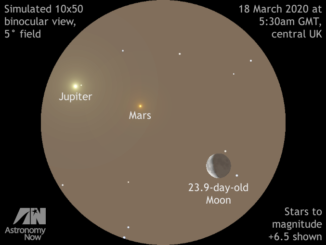
See the old Moon join a dawn planetary parade, 18–19 March
If you’re an early riser in the British Isles, let the waning crescent Moon be your guide to three naked-eye planets – Mars, Jupiter and Saturn – at dawn on 18 and 19 March 2020. This celestial conjunction occurs in the constellation of Sagittarius where you can see all four Solar System bodies within the span of a fist at arm’s length. Look for attractive binocular conjunctions too.


